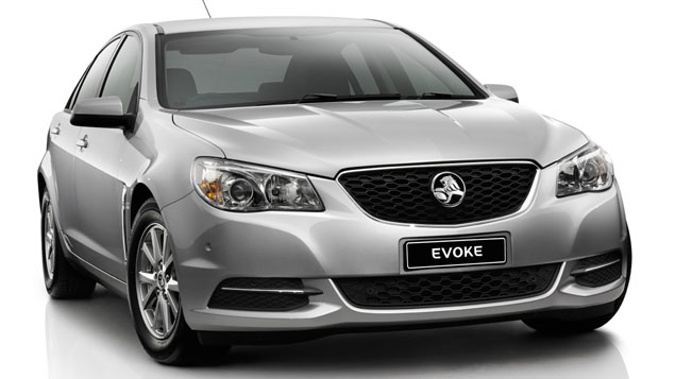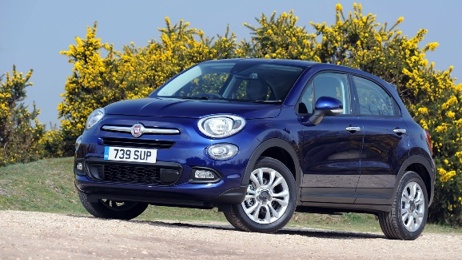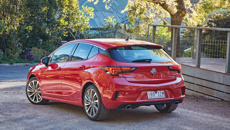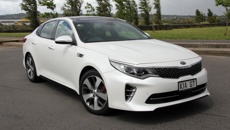
For confirmation, that some of the best new car buys reside among price leading models, you only need to look as far as the latest Holden Evoke sedan, that provides refined six-cylinder motoring, for little more that the price of a four-cylinder sedan.
Currently, the Commodore resides in the “Last waltz” saloon, with production ending in just over two years, bringing the curtain down a car that has been a major part of our automotive landscape for 35 years. However, the latest VF model is determined to depart with a bang not a whimper, and is currently among the top two or three selling new cars on our market.
With a four-year $600 million development programme behind it, this car is more than delivering on its potential. The new VF is the product of the most substantial revamp of the current Commodore since its release eight years ago. While not a “clean sheet” design, it’s the next best thing with less than 50 per cent of its components carry over items from the previous model. The cabin has been overhauled and is built around a modern and attractive dashboard. Greater use of high-grade fabrics and plastics give the passenger compartment gave the entry level evoke sedan supplied for this road test a quality look and feel. This is major progress, in an area where the Commodore has traditionally struggled.
Several elements of the car that had ticked well past their use by date have been kicked into touch. Among them is the rather agrian looking hand brake that makes away for the increasingly popular electric park brake. This is the most technically advanced Commodore ever and features Holden’s My Link app-embedded technology with full i-pod integration and built-in apps. However, a potential Achilles heal with this system is its dependence on data from your mobile phone.
Holden have played a bit of blinder with the styling, transforming an eight-year-old model into one with elegant lines that would turn heads in most markets around the world. This has been achieved through some serious facial surgery that gives the car a stronger and more distinctive frontal appearance. The old models rather square chunky appearance has been smoothed and soothed to create a more elegant profile. Another clever touch is the thoughtful nipping and tucking of the cars rather broad rear end, that gives it especially in sedan form, a more neatly proportioned appearance.
The Evoke sedan is the cheap and cheerful card in the 15 strong Commodore pack at $49,995. From there prices steadily climb for the more aspirational models, with the most expensive of these being the $85,490 long wheelbase 6.0 litre V8 Caprice sedan.
I don’t mind admitting to being a bit of a cheerleader for the 190kw 3.0 litre V6 that powers the Evoke. It hits the spot for me with its free revving nature and syrupy sweet engine note, qualities lacking in the larger 210kw 3.6 litre unit, reserved for models sitting further up the Commodore pecking order. On paper, the bigger capacity engine clearly wins the power game, but on the road where it really counts, the performance gulf between the pair is barely discernible. The smaller motor makes a large and immediate impression with its sporty and playful disposition, something you couldn’t say about Commodore motors from the past, with their lumpy and grumpy dispositions.
This engine rewards drivers with the courage to pile on the revs and it laps these up with the sort of enthusiasm you would expect to find in a good European six-cylinder engine. This is without doubt one of the best Holden sixes I have driven and by a wide margin. I am pleased to report the engine gets the transmission it richly deserves in the form of a sophisticated six-speed automatic. Clean precise gear changes come into play to show case the motors silky performance and surprisingly frugal fuel consumption.
Build quality sets a new benchmark for a Commodore. The real pity is there won’t be any successors for it to be measured against, with the rug due to be pulled on production of this model sometime in 2017. I racked plenty of drive time and kilometres in the test car over roads in various state of repairs or disrepair, ranging from an occasional pothole to badly corrugated single lane gravelled country roads. During my travels it hardly generated a complaining creak or groan. This is testament to the improved production processes and increased automation to ensure greater consistency in build quality at Holden’s Port Elizabeth plant near Adelaide, the birthplace of the Commodore. This really is a bit of a “Eureka” moment for the team at this plant, who must take a lot of satisfaction from now turning out vehicles of a genuinely high standard. However, its all come a bit late, with the Commodores fate sealed by a sharp decline in large car sales, and other newer and more sophisticated car factories, that can produce cars of a similar quality, but far more cheaply.
Apart from some low-speed bump thud, the ride and handing is a top shelf effort. There is plenty to like about the suspensions penchant for effortlessly traversing a full range of terrain and road surfaces. There aren’t any of the usual large rear wheel drive sedan handling vices, such as the side ways shuffle, that can be triggered by bruising contacts with unexpected bumps or road indentations when the car is in full flight half way around a tight corner. I have road tested plenty of large Aussie made six cylinder cars, but none have delivered the high quality driving experience and exemplarily levels of refinement, that are such an integral part of the VF Commodores DNA.
What’s the verdict? Its days may be numbered with production scheduled to cease in 2017, yet ironically this “Last hurray’ Commodore is the best ever, and will depart as a true six-cylinder champion.
Take your Radio, Podcasts and Music with you









